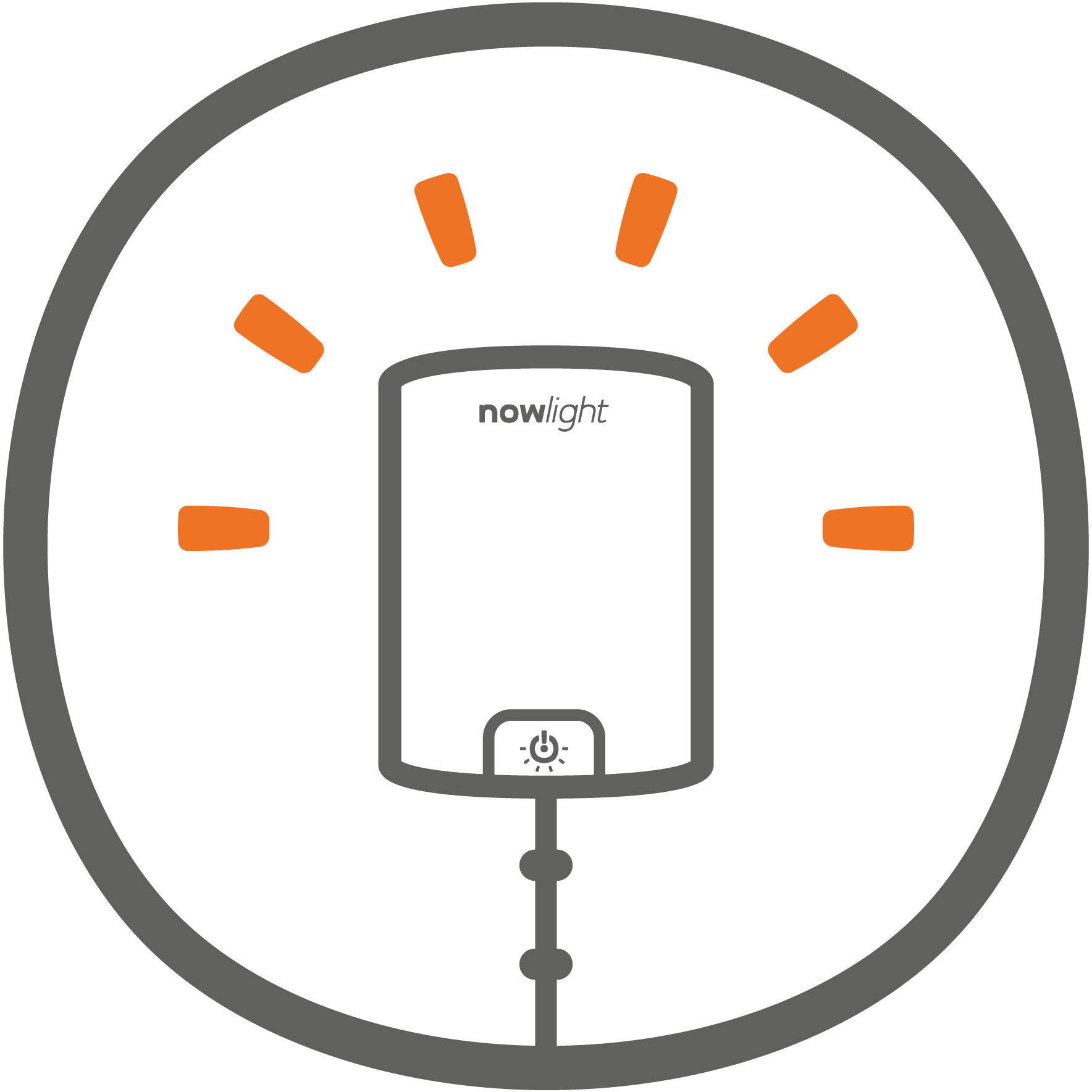
nowlight
FAQs
FREQUENTLY ASKED QUESTIONS
The 'PXX' value shown on the nowlight display indicates the state of charge of the battery as a percentage
For example, if the display shows 'P60', this means that the battery is 60% charged.
If the nowlight display shows 'Pull', this means that the battery is less than 5% charged.
This message is a reminder that must charge your nowlight soon in order to keep using it.
You can do this by pulling on the nowlight cord, using the solar panel (provided the sun is up!) or connecting nowlight to mains electricity.
When the nowlight display shows 'Full' it means that the battery is fully charged or nearly fully charged.
The nowlight display flashes when any kind of charging is taking place. If the display is not flashing, then the nowlight is not charging.
For example, during solar charging, the display will flash to indicate that current is flowing from the solar panel to the nowlight. If the solar panel is connected to the nowlight but the display is not flashing, it means that there is insufficient sunlight to charge nowlight.
During the Indiegogo campaign for nowlight, we sold Fairy Lights as an optional accessorry. However, we decided not to sell Fairy Lights after the end of the Indiegogo campaign. This is because nowlight is compatible with nearly all USB Fairy Lights, and there are lot of other companies that sell them.
We do not recommend any specific Fairy Lights, but we suggest you purchase Fairy Lights that require a low amount of electrical current (ideally no more than 0.15 Amps, ask the supplier for the information). Lower electrical current means lower energy consumption, which in turn means your nowlight can illuminate them for longer!
When the nowlight battery is low, there is insufficient voltage to provide power to SatLights.
The nominal battery voltage of nowlight is 3.2V. However, to minimise electrical resistance along the 5 metre SatLight cables, we provide power to the SatLights at 17V.
This significantly improves the energy efficiency of SatLights but when the nowlight battery is running low, it is no longer possible to boost the power to 17V.
If you are using nowlight and the battery is running low, you may find that the SatLights are turned off by the system or that you are unable to turn the SatLights on.
When the battery is sufficiently charged, the SatLights will function again as normal.
When the nowlight battery is almost empty, there is insufficient voltage to provide power to the USB output.
nowlight uses a Lithium Iron Phosphate battery (usually shortened to LiFEPO4 or IFR). This has a nominal voltage of 3.2 Volts but providing power to the USB output requires 5 Volts.
We boost the voltage using a boost converter, but when the nowlight battery is nearly empty it no longer possible to power the boost converter. This is why the USB output stops working when the nowlight battery is nearly empty.
When you charge your nowlight and battery state of charge increases, the USB output will start working again as normal.
nowlight is sold with a USB charging cable, that is comptabile with any 5V USB port, including those found in computers.
However, the USB ports on some computers have a low peak power output. This means that it might take much longer to charge your nowlight from the USB port in your computer than by plugging it into a USB wall charger.
To fully charge nowlight from empty using mains power will take around 5 hours provided you use a USB power source that can provide at least 1 Amp of current.
USB power sources with a lower peak current output will take longer to charge nowlight.
For example, a USB wall charger with a peak current of 500 mA (0.5 Amps) will take around 10 hours to fully charge the nowlight battery from empty.
We reccomend that you use the DC charging cable that is provided with nowlight whenever possible. If the original DC charging cable is not available, nowlight should be compatible with any charging cable that has a USB Type-A connector (to plug into the external power source) and a Type-H DC jack connector (to plug into nowlight).
Note that using a longer charging cable is likely to increase the amount of time it takes to charge your nowlight, due to increased electrical resistance along the wire. Cheap charging cables should be avoided as they can cause power surges which may damage your nowlight.
A cheap charging cable is also likely to take longer to charge a nowlight as they are likely to use a thinner gauge of wire, which cannot conduct as much electrical current.
Please be aware that we are unable to recommend specific manufacturers of DC charging cables.
nowlight is 'shower proof', with an ingress protection rating of IP33. This means that nowlight is resistant to water spraying from above, on to its top and side surfaces.
However, nowlight is not protected from water spraying onto the underside of the unit. nowlight is not submersible.
We do not recommend nowlight is stored outdoors for extended periods of time. Although nowlight is 'shower proof' and suitable for use outdoors, long-term outdoor storage could expose the nowlight to high levels of ambient moisture. Over time this could damage the electronic components in nowlight.